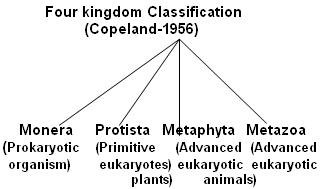CBSE Class 11 Biology Chapter 2 Revision Notes Part 2
Chapter 2: Biological Classification Revision Notes Part 2
Biological classification is of utmost importance to scientists as it enables them to easily study a certain organism based on the characteristics shared by the group. But before the five-kingdom classification that we know of today was accepted, several attempts were made by scientists to group organisms.
Types of biological classification:
On the basis of their common characteristics, the organisms had been historically classified into the following kingdoms:
1. Two kingdom system of biological classification
Biological taxonomy is the scientific procedure of categorizing organisms into different groups. Linnaeus, known as the father of taxonomy, created the two kingdom classification system. He divided the living organisms into two kingdoms which were Plantae and Animalia.
Characteristics of kingdom Plantae
- Their nutrition method is autotrophic, which means they create their own food and absorb inorganic nutrients from the surrounding.
- They have a cell wall, and a big central vacuole is also present.
- The nervous system, muscular system, and sense organs are not present.
- Locomotion can be seen in some lower algae.
- Unlimited growth is seen.
Characteristics of kingdom Animalia
- Their mode of nutrition is heterotrophic, which means they depend on others for food and cannot make it from inorganic materials.
- Food is assimilated into tissues to obtain energy metabolic processes.
- There is no cell wall, and central vacuole is absent
- The nervous system, muscular system, and sense organs are present.
- Locomotion can be seen all over.
- Animalia has limited growth.
2. Three kingdom system of biological classification
Ernst Haeckel founded the three kingdom classification system in the late 1800s and divided living organisms into three kingdoms of Plantae, Animalia, and Protista. He added an additional kingdom of Protista. All the living organisms which are not fully capable of differentiating between tissues, fall into the Protista kingdom. Despite the up-gradation of the classification system from two kingdoms to three kingdom classification system, there were still some demerits. There was no partition between prokaryotes and eukaryotes, and both unicellular and multicellular fell into the kingdom Protista.
3. Four kingdom system of biological classification
The four kingdom classification system was founded in the year 1956 by Copeland. The living organisms were divided into Protista, Plantae, Animalia, and Monera kingdoms. The addition to three existing kingdoms was Monera. Monera kingdom comprises prokaryotes that are single-celled organisms that lack a true nucleus.
4. Five kingdom system of biological classification
The five-kingdom classification system was founded in the year 1969 by R.H. Whittaker. He classified living organisms based on cell structure, reproduction, thallus organization, mode of nutrition, and phylogenetic relationship.
5. Six kingdom system of biological classification
Six kingdom classification system was founded by Professor Carl Woese in the year 1990. In this classification system, the living organisms were categorized into three domains: Plants, Animals, Protists, Fungi, Archaebacteria, Eubacteria. This classification was majorly based on the principles of the five kingdom classification system.
]]>

